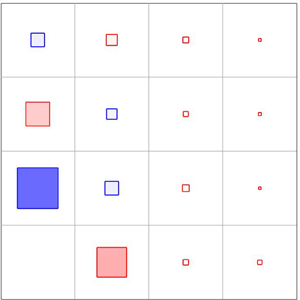Article contents
Energy transfer in turbulent channel flows and implications for resolvent modelling
Published online by Cambridge University Press: 25 January 2021
Abstract

We analyse the inter-scale transfer of energy for two types of plane Poiseuille flow: the P4U exact coherent state of Park & Graham (J. Fluid Mech., vol. 782, 2015, pp. 430–454) and turbulent flow in a minimal channel. For both flows, the dominant energy-producing modes are streamwise-constant streaks with a spanwise spacing of approximately 100 wall units. Since the viscous dissipation for these scales is not sufficient to balance production, the nonlinear terms redistribute the excess energy to other scales. Spanwise-constant scales (that is, Tollmien–Schlichting-like modes with zero spanwise wavenumber), in particular, account for a significant amount of net energy gain from the nonlinear terms. We compare the energy balance to predictions from resolvent analysis, and we show that it does not model energy transfer well. Nevertheless, we find that the energy transferred from the streamwise-constant streaks can be predicted reasonably well by a Cess eddy viscosity profile. As such, eddy viscosity is an effective model for the nonlinear terms in resolvent analysis and explains good predictions for the most energetic streamwise-constant streaks. It also improves resolvent modes as a basis for structures whose streamwise lengths are greater than their spanwise widths by counteracting non-normality of the resolvent operator. This is quantified by computing the inner product between the optimal resolvent forcing and response modes, which is a metric of non-normality. Eddy viscosity does not respect the conservative nature of the nonlinear energy transfer, which must sum to zero over all scales. Since eddy viscosity tends to remove energy, it is less effective in modelling nonlinear transport for scales that receive energy from the nonlinear terms.
Information
- Type
- JFM Papers
- Information
- Copyright
- © The Author(s), 2021. Published by Cambridge University Press
References
REFERENCES
- 55
- Cited by


